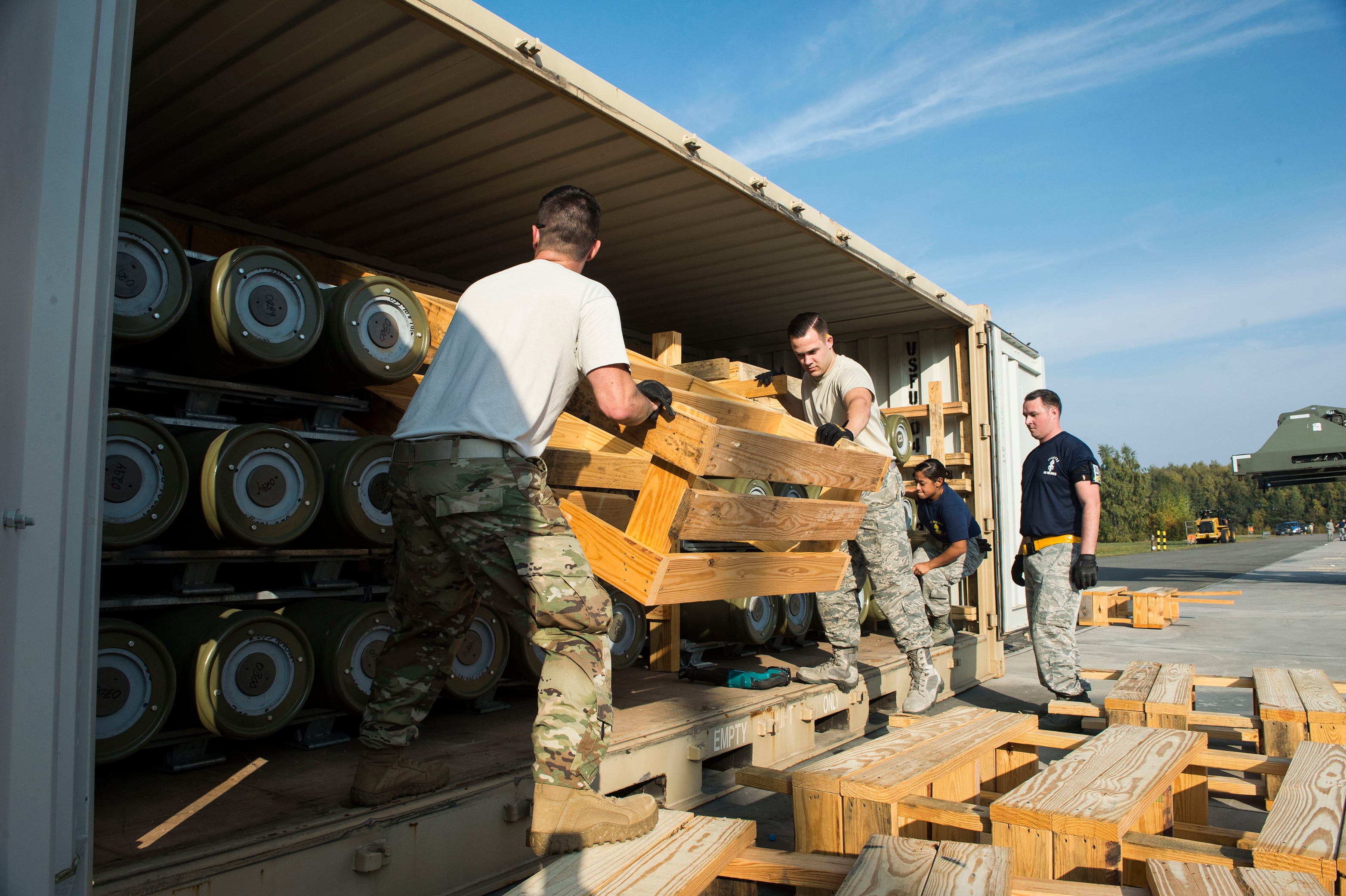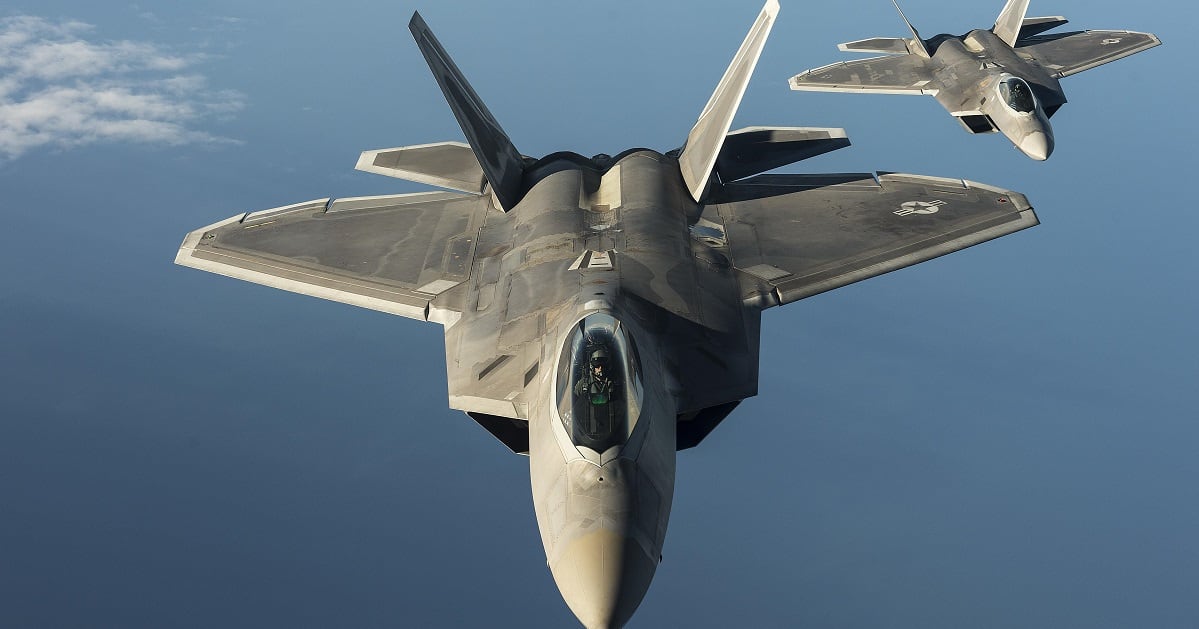In mid-October, the U.S. Air Force received its largest shipment of ordnance since the bombing of Yugoslavia in the late 1990s.
The measure is part of a lockstep approach by U.S. Air Forces in Europe and U.S. European Command to rearm the continent and bolster its deterrence posture.
Roughly 100 containers filled with munitions rolled into Ramstein Air Base in Germany this month.
“A variety of munitions in approximately 100 containers were received,” Auburn Davis, an Air Forces in Europe spokeswoman, said. “For operational security reasons, we cannot discuss specific numbers of items, nor the specifics of the items.”
Davis added that she could not get into the specifics regarding container size, or any other shipment details.
Regardless, the shipment is reportedly very large.
Master Sgt. David Head, a section chief with the 86th Munitions Squadron at Ramstein, said in a press release that a delivery of this magnitude has not taken place since the late 20th century.

“This is the largest shipment of its kind since Operation Allied Force, which took place in 1999,” he said, referring to a two-month NATO campaign bombing Serbian forces to prevent ethnic cleansing during the Kosovo War.
“The munitions that we received will be used for future theater operations and the evolving U.S. European Command presence,” Head added.
The stockpile will be used to support NATO’s European Deterrence Initiative and augment the Air Force’s war reserve materiel in Europe, according to a Ramstein Air Base statement.
The European Deterrence Initiative, or EDI, began in 2014 — several months after Russia’s annexation of Crimea — to deter Russian aggression against its neighboring countries.
The EDI aims to increase the U.S. military’s responsiveness to a crisis on the continent by stockpiling ammunition, fuel and equipment at strategic locations. War reserve materiel, meanwhile, are munitions stockpiles designed to last for a theater of operations until resupply at wartime rates is established.
RELATED

Since 2014, stockpiling weaponry has been a growth point for U.S. defense policy in Europe, as it rehabilitates a military posture that deteriorated after the conclusion of the Cold War.
Master Sgt. Arthur Myrick, a munitions flight chief with the 86th, said that the munitions will also play a major role outside the European continent.
“We’re a major airlift hub for U.S. Air Forces in Europe-Air Forces Africa, so our main job is to get munitions where they need to be on time,” Myrick said. “These are real-world munitions to fulfill real-world objectives."
"That’s the reason we are downloading these things, to make sure we have the capability to move the fight forward if need be,” he added.

Air Forces in Europe have played an important role in supplying munitions for U.S. military campaigns in the Middle East, to include airstrikes in Libya, Syria, Iraq and Afghanistan.
Now, a focus on Europe’s own needs appears to be the main motive for the stockpile replenishment.
Across Europe, the Air Force has also been reinforcing its basing posture. The Pentagon has pushed funds out to make significant airfield improvements in Eastern Europe, such as new refueling infrastructure, parking aprons and taxiways in countries like Estonia and Hungary.
Kyle Rempfer was an editor and reporter who has covered combat operations, criminal cases, foreign military assistance and training accidents. Before entering journalism, Kyle served in U.S. Air Force Special Tactics and deployed in 2014 to Paktika Province, Afghanistan, and Baghdad, Iraq.
